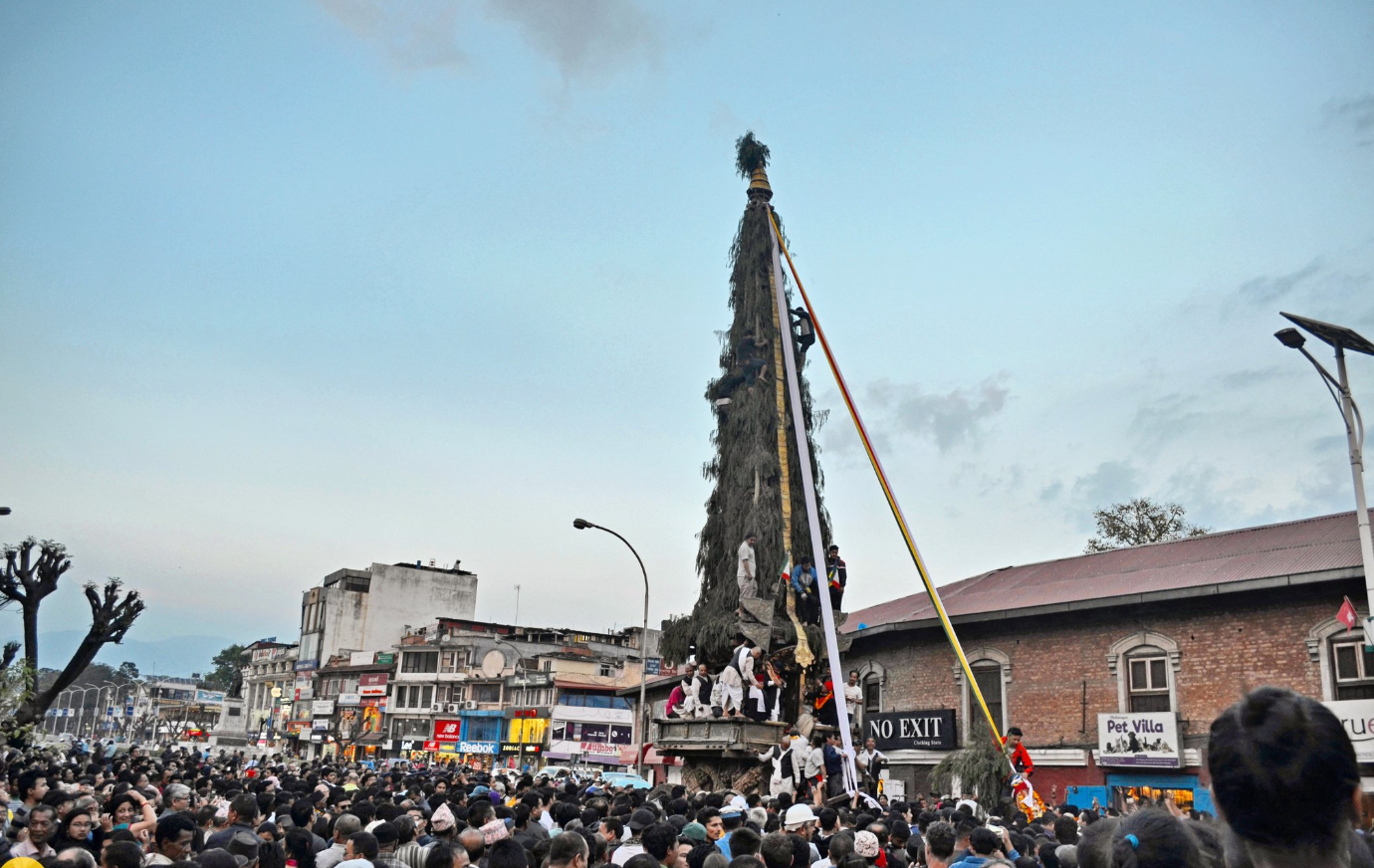Seto Machhindranath chariot fest not to be affected by COVID-19

By A Staff Reporter, Kathmandu, Apr. 5: A meeting of the Seto Machhindranath Rathyatra Management Committee has decided to continue this year’s chariot procession of Seto Machhindranath, which falls on April 20.
The procession was postponed due to the fear of spreading of COVID-19 pandemic.
Coordinator of the committee and chair of Kathmandu Ward No. 25 Nilkaji Shakya said that preparations for the chariot procession of Seto Machhindranath have begun.
In the meeting held on Sunday, representatives of Guthi Sansthan of Kathmandu, District Administrative Office, priests, security bodies, local representatives and clubs collectively decided to continue this year’s festival, said Shakya.
“The chariot procession will start following the health protocols issued by the government. Last year, the festival was postponed because of COVID-19. But this time, the infection ratio is normal in current days. If the cases do not increase in the coming days, it will be celebrated with much fervour as previous years albeit with safety measures,” he said.
The Seto Machhindranath chariot will be designed in a triangular shape with regard to traditional methods. Originally, nine different types of timber were used with the lighter ones on the top and the heavier ones on the bottom for the chariot. But there has been a lack of resources, mostly hard timber, which is used in joins and tie with vines.
Construction works of the chariot will start from April 11, eight days before the festival.
The Seto Machhindranath is a widely venerated deity of the Kathmandu Valley and the chariot-pulling festival is a three-day-long cultural affair
During the festival, the chariot is taken to several parts of the valley.
The pulling of the chariot starts from Jamal, which gradually moves to Ratna Park, Bhotahiti and Asan. On the second day, it is taken to Balkumari, Keltole, Indrachowk, Makhan and Hanumandhoka and on the final day, the chariot passes through Chinkmugal, Jaishidewal and Janabahal and Lagan.
Normally, the festival is celebrated for three days, but it takes seven days to take it to the different parts of the Valley. Many people visit the chariot and offer their worship to the idol of the deity inside to commemorate the festival.
Recent News

Do not make expressions casting dout on election: EC
14 Apr, 2022
CM Bhatta says may New Year 2079 BS inspire positive thinking
14 Apr, 2022
Three new cases, 44 recoveries in 24 hours
14 Apr, 2022
689 climbers of 84 teams so far acquire permits for climbing various peaks this spring season
14 Apr, 2022
How the rising cost of living crisis is impacting Nepal
14 Apr, 2022
US military confirms an interstellar meteor collided with Earth
14 Apr, 2022
Valneva Covid vaccine approved for use in UK
14 Apr, 2022
Chair Prachanda highlights need of unity among Maoist, Communist forces
14 Apr, 2022
Ranbir Kapoor and Alia Bhatt: Bollywood toasts star couple on wedding
14 Apr, 2022
President Bhandari confers decorations (Photo Feature)
14 Apr, 2022










